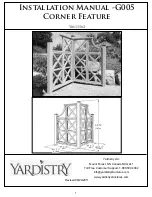
6 Using the product
21
An example of this is coconut oil, for which the instrument shows
higher TPM values than column chromatography. However, this fat
is unsuitable for deep fat frying and is therefore primarily used for
roasting.
Free fatty acids
The instrument measures the total amount of polar materials in the
cooking fat (% TPM) which makes it very possible to evaluate the
load of the oil as a result of deep fat frying. On the other hand, free
fatty acids (FFAs) are used for the evaluation of the age of the fat
during storage. FFAs are not suitable for identifying the thermal
loads of the oil. FFAs cannot be measured with the instrument.
Polymeric triglycerides (PTGs)
Polymeric triglycerides are also being used for the evaluation of
cooking oils with increasing frequency. The results of this method
are in most cases comparable with the % TPM value.
PTG
≈
% TPM/2
6.2.
Carrying out measurements
WARNING
Risk of burns due to hot instrument parts (sensor and probe
shaft)!
> Do not touch hot instrument parts with your hands.
> In the event of burns, immediately cool the relevant spot with
cold water and see a doctor if necessary.
Please take note of the following information in order to
obtain correct measurement results:
• Take the product being deep fried out of the oil and wait
5 mins until there are no more bubbles rising before
measuring.
• If you suspect a measurement error due to water being
contained: Repeat the measurement after 5 mins (do
not deep fry during this time, keep oil/fat at a high
temperature). If the new reading is lower, measure
again after 5 mins until the reading stabilises if
necessary.
• Keep the sensor away from metallic parts (e.g. deep-
frying basket, pan walls), as these may affect the
measurement result. Minimum distance from metal
parts: 1 cm on each side.
Summary of Contents for OILTESTER
Page 1: ...OILTESTER Deep frying Oil Tester Instruction manual...
Page 2: ...2...








































